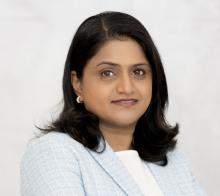Summary
Disclaimer: This summary has been generated by AI. It is experimental, and feedback is welcomed. Please reach out to info@qconsf.com with any comments or concerns.
This presentation, "How to Build an Exchange: Sub Millisecond Response Times and 24/7 Uptimes in the Cloud," features Frank Yu from Coinbase as the speaker. It addresses the challenges and strategies involved in creating high-performance exchange systems in a cloud environment.
Key Points:
- Introduction to Exchange Systems: Frank Yu discusses the fundamental operations of an exchange as a platform where orders to buy or sell are processed and updates on pricing and trades are provided efficiently.
- Architecture and Performance: The talk emphasizes the importance of removing operating system interference and optimizing memory usage to enhance performance. Techniques like pinning threads to CPUs and using single-threaded processes to minimize latency are highlighted.
- Scalability and Redundancy: The system is designed for high availability and disaster recovery through the use of raft consensus algorithms, allowing for fast and reliable order processing even in the event of hardware failures.
- Upgradation and Deployment: Implementation of continuous integration practices and blue-green deployments enables the system to maintain a 24/7 uptime without traditional long maintenance windows, crucial in a fast-paced financial environment like cryptocurrency trading.
- Data Management: The architecture leverages deterministic processing for consistency in transactions, ensuring that identical inputs result in predictable outputs, which is critical for handling financial trades.
- User Interaction: The system prioritizes giving users the best available prices to encourage fair trading practices, detailed through examples of order fulfillment and price-time priority rules.
- System Enhancements: Frank Yu advocates for reducing unnecessary processes and blocking operations in the hot path of data handling to improve order processing speed and efficiency.
This structured approach ensures that the exchange platform remains resilient, performant, and reliable, meeting the demanding needs of continuous and rapid transaction processing in the cloud.
This is the end of the AI-generated content.
Abstract
These days it is possible to achieve fairly good performance on cloud provisioned systems. We discuss the design of a high performance, strongly consistent system which maintains constant service in the face of regular updates to core logic.
Interview:
What is your session about, and why is it important for senior software developers?
Due to unique performance and consistency requirements, financial exchanges have traditionally pushed the boundaries of what’s possible on backend services. We can now do a similar exercise on cloud workloads and provide some counterintuitive anecdata to common wisdom about scaling.
Why is it critical for software leaders to focus on this topic right now, as we head into 2026?
If some folks designing distributed systems gain some conviction to try to do more transactions with less complexity, we will have seen critical impact.
What are the common challenges developers and architects face in this area?
Standard patterns in scaling distributed systems in the cloud can lead to proliferation of provisioned resources and an overwhelming cross product of interactions between different systems and tools. There are circumstances where addition by subtraction can be uniquely impactful.
What's one thing you hope attendees will implement immediately after your talk?
Something deterministic would be wonderful.
What makes QCon stand out as a conference for senior software professionals?
QCon has had plenty of impact on the landscape of Software Developers in the Bay. There are talks that have created massive movements, leaving a sprawling wake of refactored and scaled systems across the industry.
What was one interesting thing that you learned from a previous QCon?
Database people give excellent talks, I learned about fsyncgate, mediocre client-server protocols, and streaming magic all at QCon. The rigorous tracks are properly rigorous here at QCon.
Speaker

Frank Yu
Director of Engineering @Coinbase, Previously Principal Engineer and Director @FairX
Frank is an engineering leader at Coinbase, focusing on distributed low latency trading platforms. Prior to Coinbase, he served as Principal Engineer and later Director of Software Engineering at FairX, leading the design and build of what would become the Coinbase Derivatives Exchange post acquisition. Frank has spent over a decade making tradeoffs on mission critical systems with submillisecond response times and loves chatting about complexity, testing, and performance.







